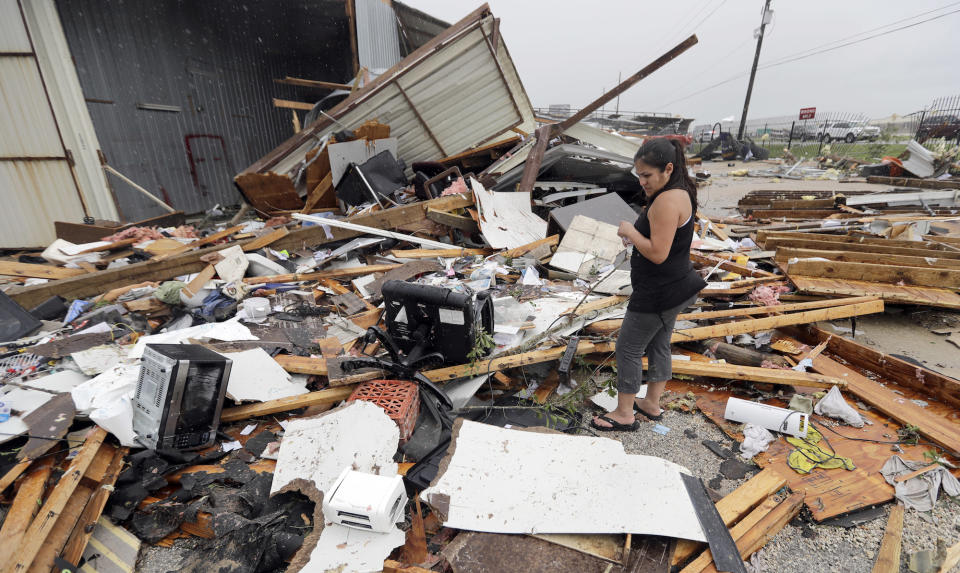Houston was a ticking time-bomb for a devastating hurricane like Harvey
Shutterstock/Reuters/Business Insider
Over the weekend, Texas' Gulf Coast experienced record flooding and wind speeds from Hurricane Harvey, an "unprecedented" and "catastrophic" rainfall event for the state, according to the National Weather Service and National Hurricane Center.
Houston — a city with 800 miles of creeks and bayous that can easily overflow during a storm surge — was not ready. The city's flat geography, outdated (and in some areas, blocked) drainage systems, and a recent construction boom have made it especially vulnerable to hurricanes.
Experts are calling Harvey a "500-year flood," meaning there is a 1-in-500 annual chance that something like this could happen. Since 500-year floods are so rare, cities don't always prepare for that kind of worst case scenario. Houston's anti-flood policy, called the Hazard Mitigation Plan, addresses 100-year floods, not 500-year ones.
Then again, Houston has seen three 500-year floods in the past decade — in 2009, 2015, and 2016. On a national level, there were also eight 500-year flood events from August 2015 to August 2016, according to the National Weather Service. And from 2010 to 2016, the US experienced over a dozen "1,000-year floods."
Here are a few reasons why Houston was unprepared for Harvey:
The Bayou City is "flat as a pancake."
Dubbed the Bayou City, Houston has ten winding waterways that flow through the surrounding area and help naturally drain floodwater.
Most of Houston's geography is "flat as a pancake," according to the Houston Chronicle. When Harvey made landfall, the city had trouble draining the water as fast as it fell, due partly to the city's low incline. The water became backed up along the drainage routes, many of which were roads.
Many parts of Houston also have soil made from clay, a material that does not absorb water well.
REUTERS/Nick Oxford
Developers have failed to follow the federal wetlands mandate.
Over the past two decades, over 38,000 acres of wetlands have disappeared in greater Houston, according to a 2015 Houston Chronicle report. Wetlands are areas that act like sponges for excess water. Without them, a city like Houston becomes more prone to floods.
Construction has boomed in recent years, but not all developers have followed a federal policy (established in 1989) requiring that new developments cause "no net loss" in wetlands. Instead, wetlands have been turned into neighborhoods, office buildings, and strip malls in Houston.
David J. Phillip/APNew developments are blocking drainage systems.
New developments covered in asphalt and concrete that have replaced wetlands, like parking lots and roads, have exacerbated the effects of flooding in Houston. Between 2001 and 2011, Houston's Fort Bend County, for example, had a 53% increase in water-resistant surfaces, which block drainage systems.
And as The Wall Street Journal notes, Houston's building regulations have also not accounted for historic flooding levels. New buildings are required to be built at 12 inches above 100-year flooding levels. In some areas of the city, Harvey has caused water levels to go above those levels.
Most of Houston's drainage systems were also built in the early 20th century and only meant to withstand a 10-year flood. Replacing them would be expensive, though local officials are working to widen existing channels so they can sustain 25-year floods.
All of these factors added up to work against the city when Harvey, a storm of unprecedented proportions, hit Texas.
Widespread flooding from Harvey is expected for days, with up to 50 inches of rain forecasted in and around Houston. US officials say that the hurricane contributed to five deaths, a number that's expected to rise. An estimated 30,000 people will likely need to find refuge in shelters, since flooding will linger, according to The Washington Post. At the height of the storm on Friday night, winds reached a dangerous speed of 130 mph.
While many climate scientists hesitate to link any single weather event to climate change, they say aspects of Hurricane Harvey (and other recent cyclones) suggest that global warming makes tropical cyclones worse. As ProPublica notes, climate change will likely cause more devastating storms in coming years. Harvey underscores the need for flood resilience, especially in cities that are home to millions of people.
NOW WATCH: Terrifying NASA footage from space shows the giant Hurricane Harvey about to slam the Texas coast
See Also:

 Yahoo News
Yahoo News 




